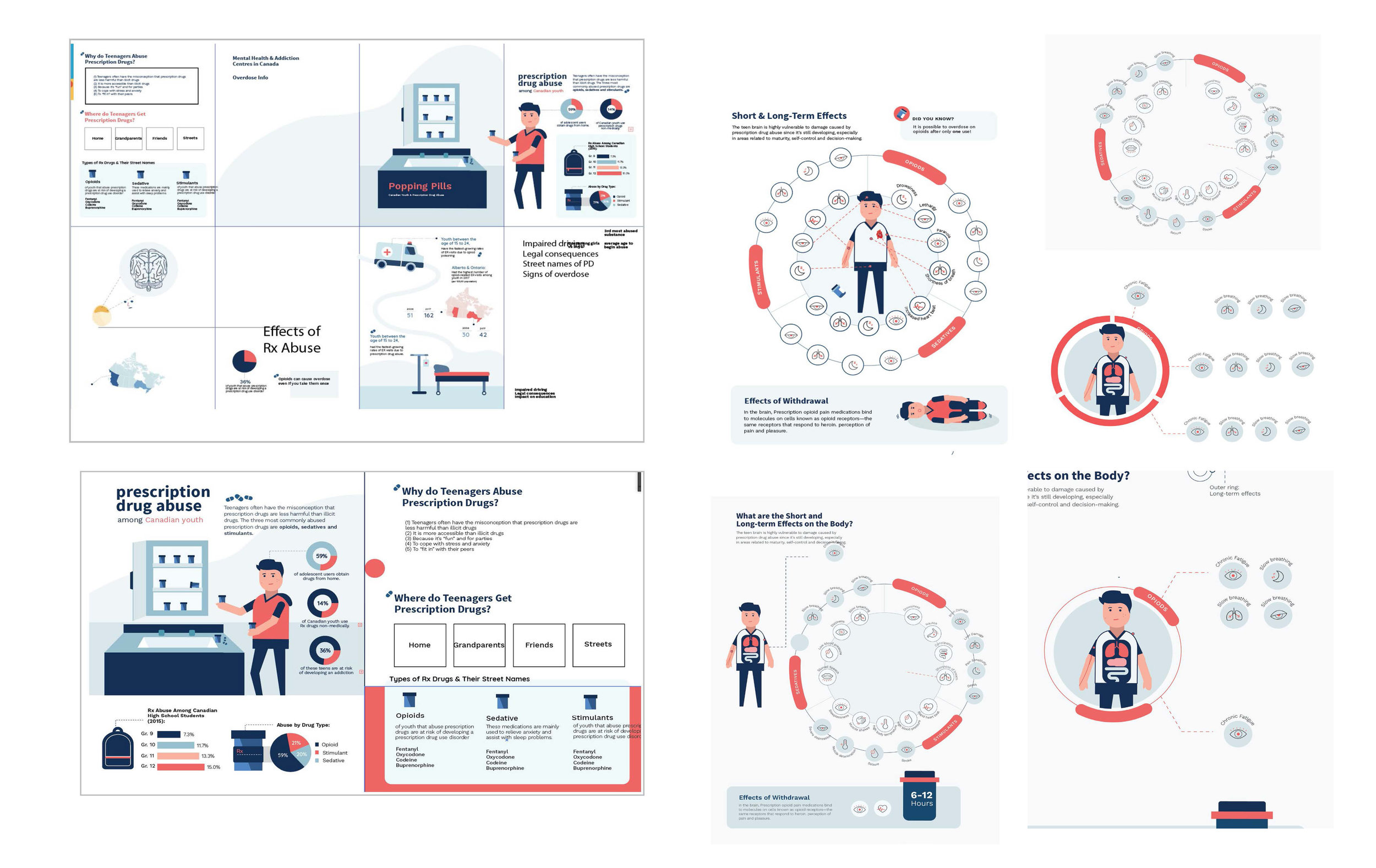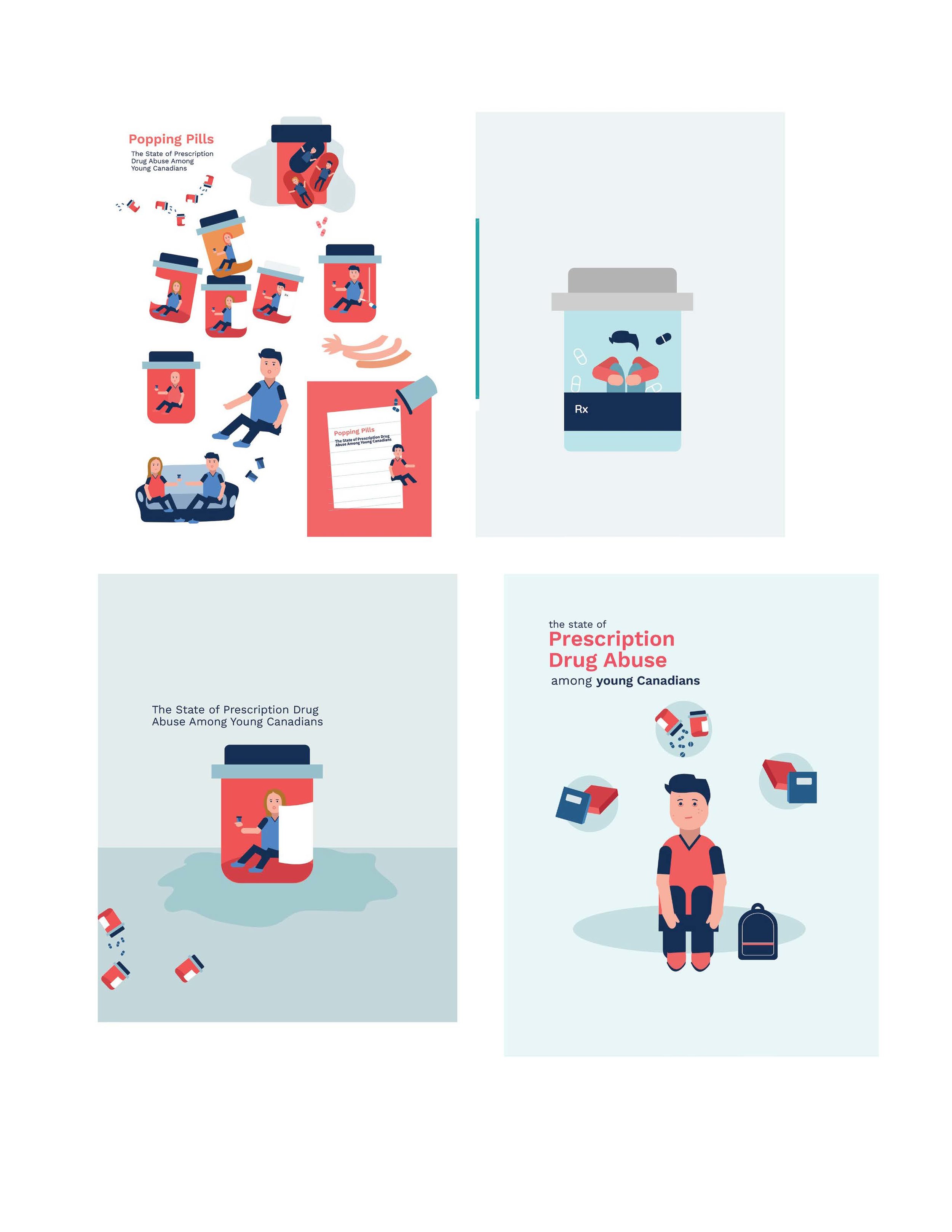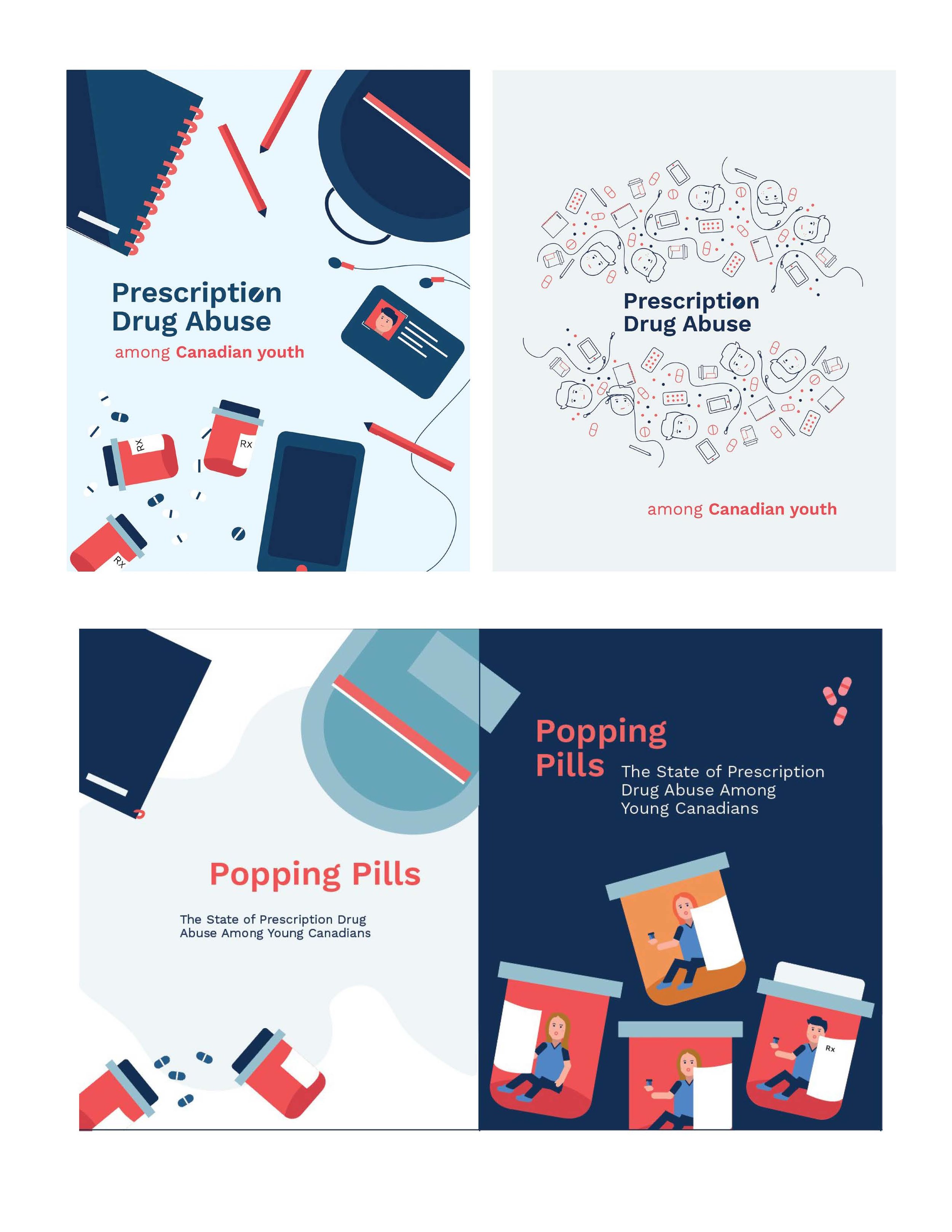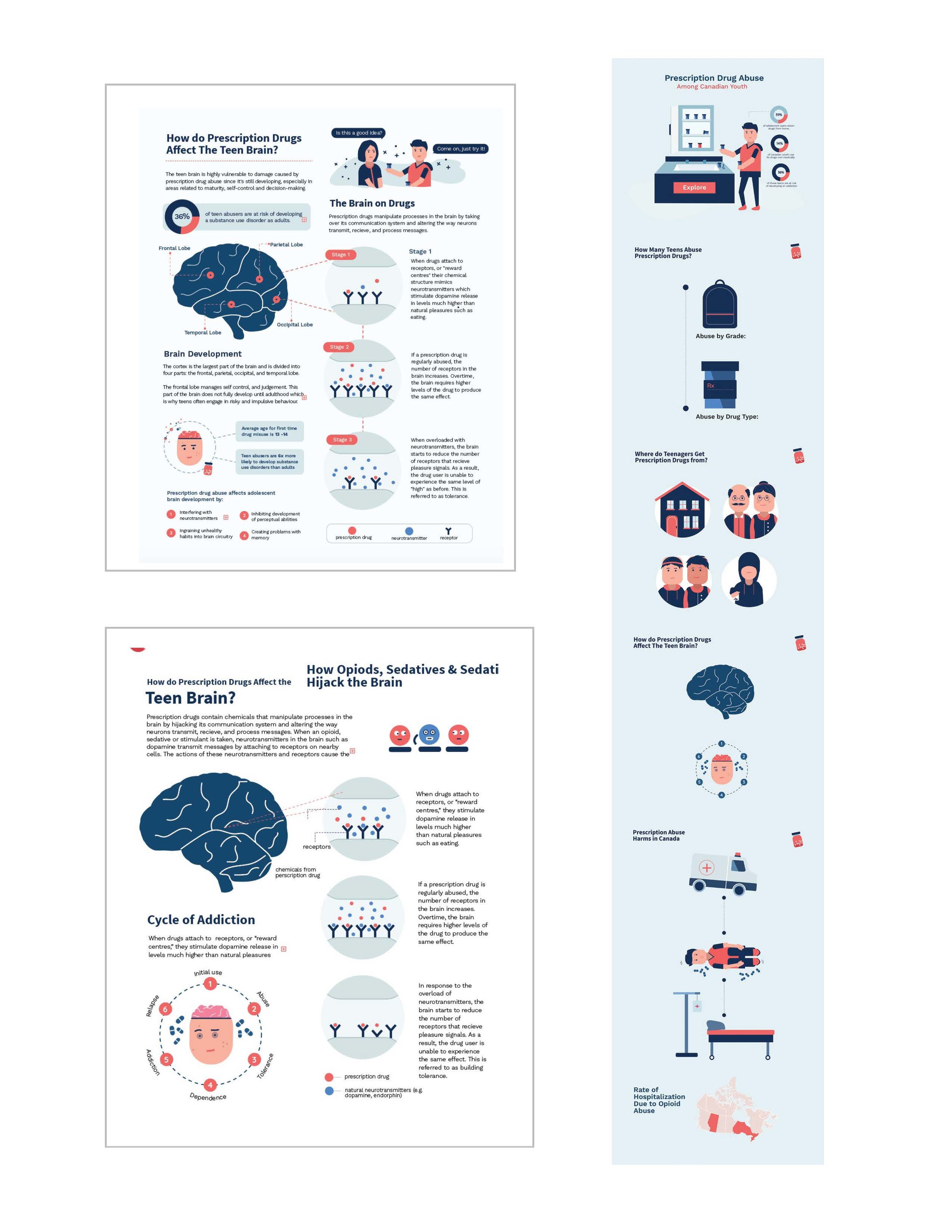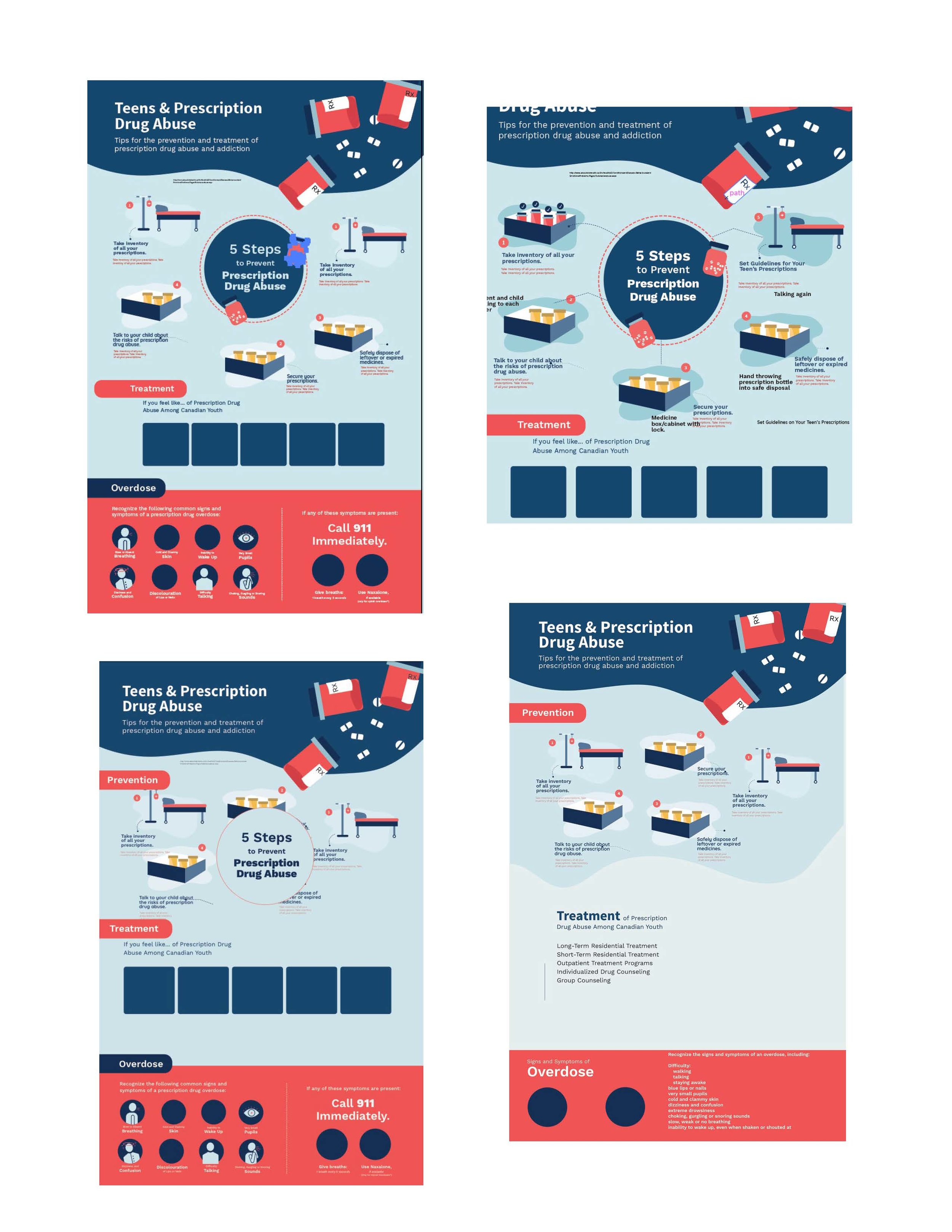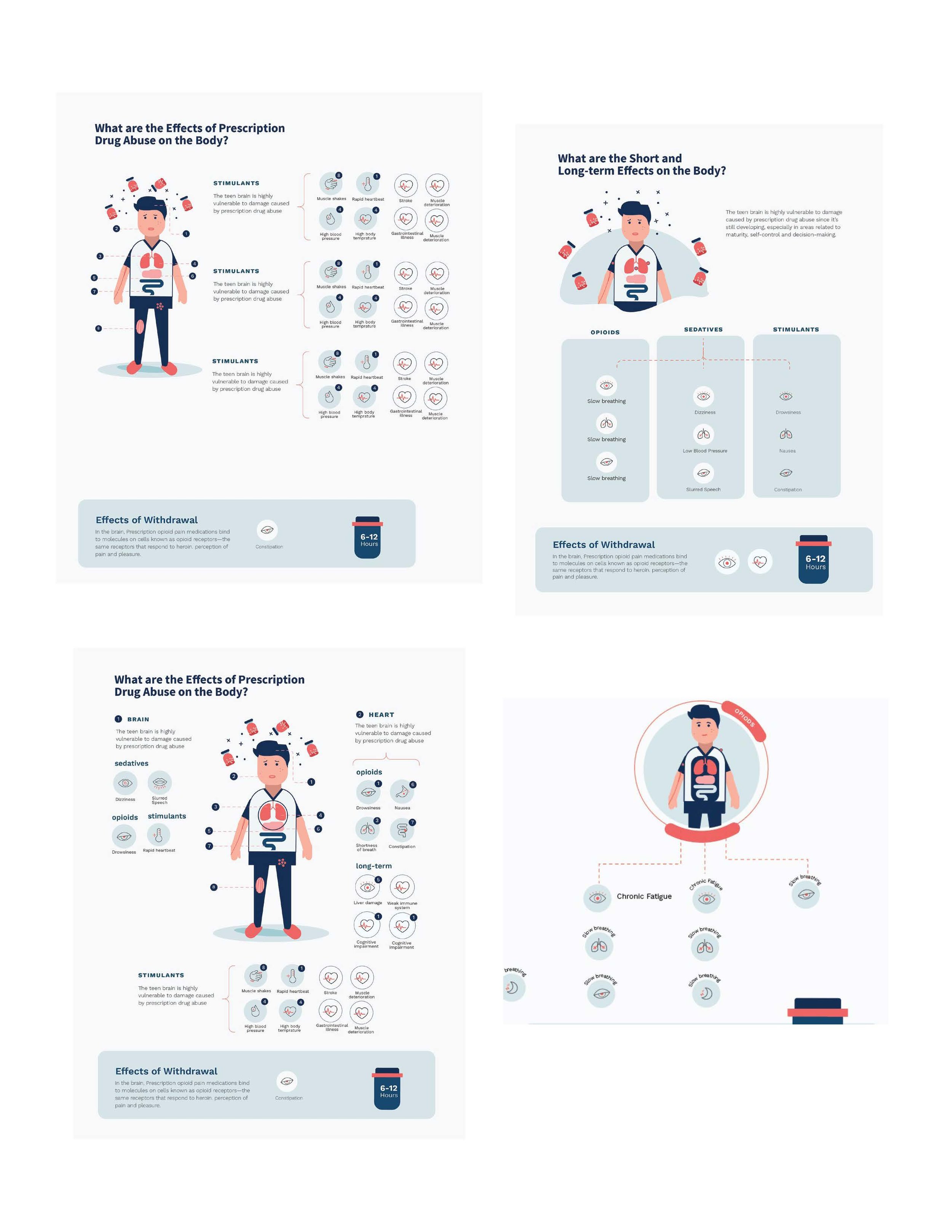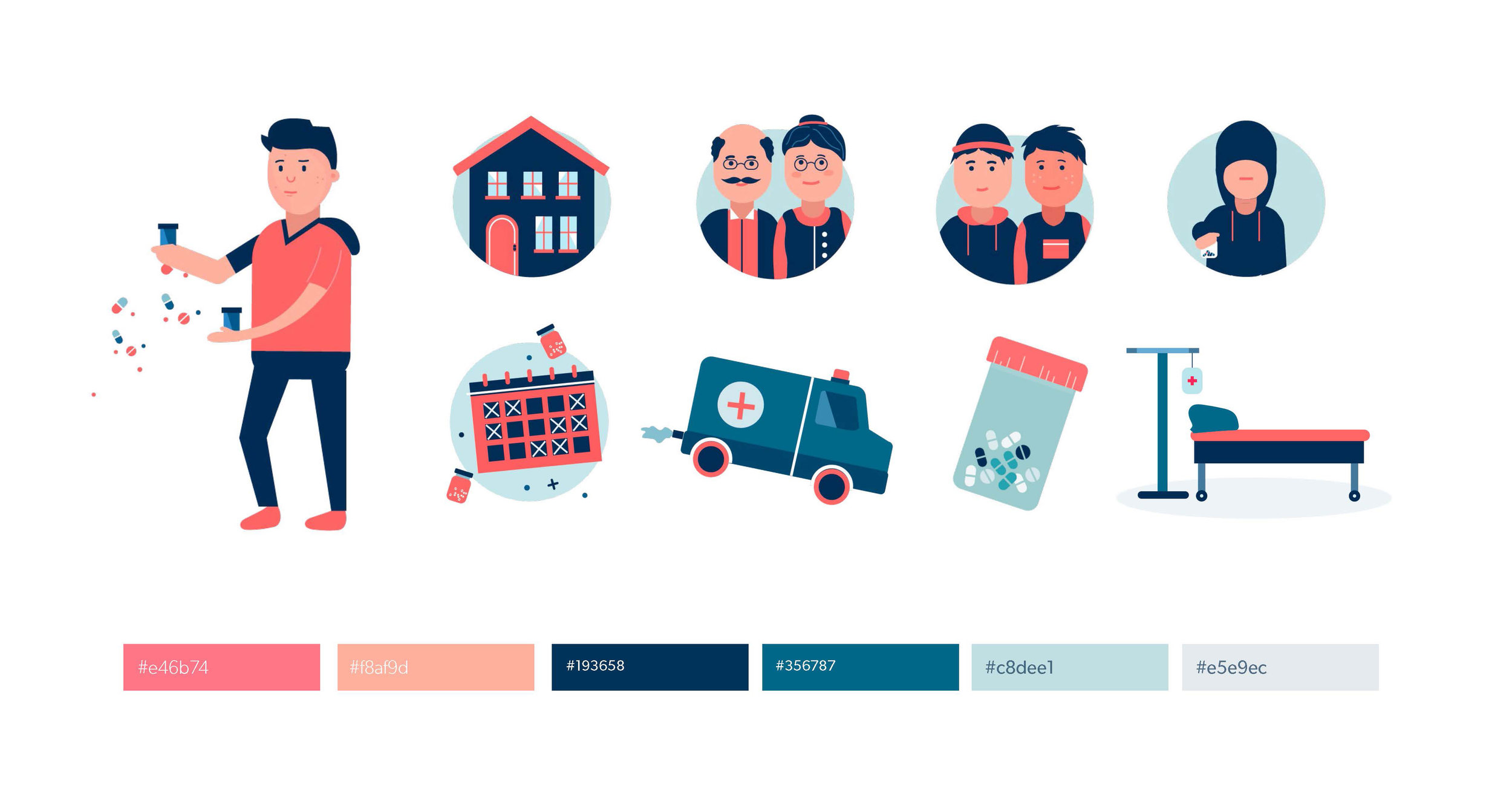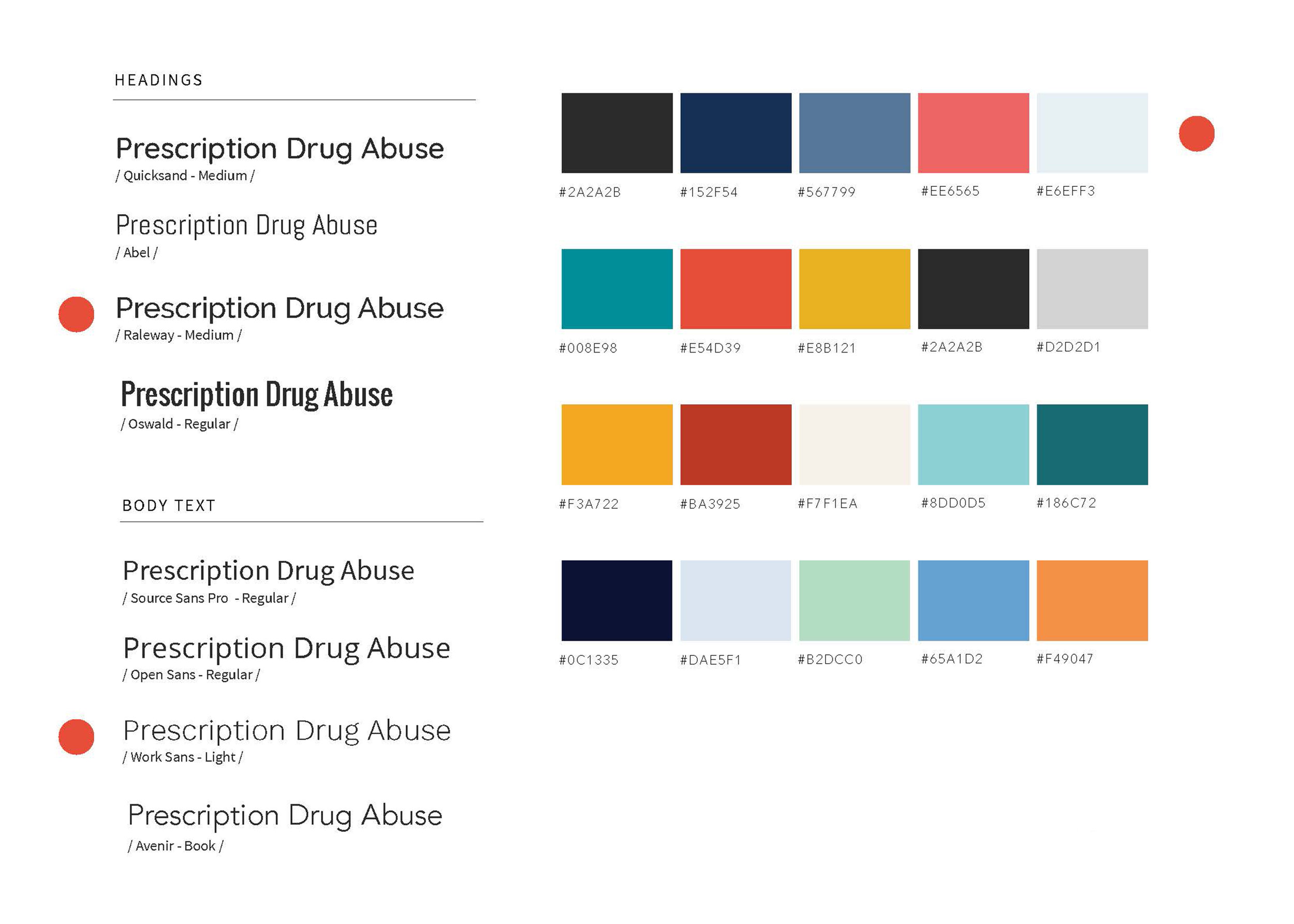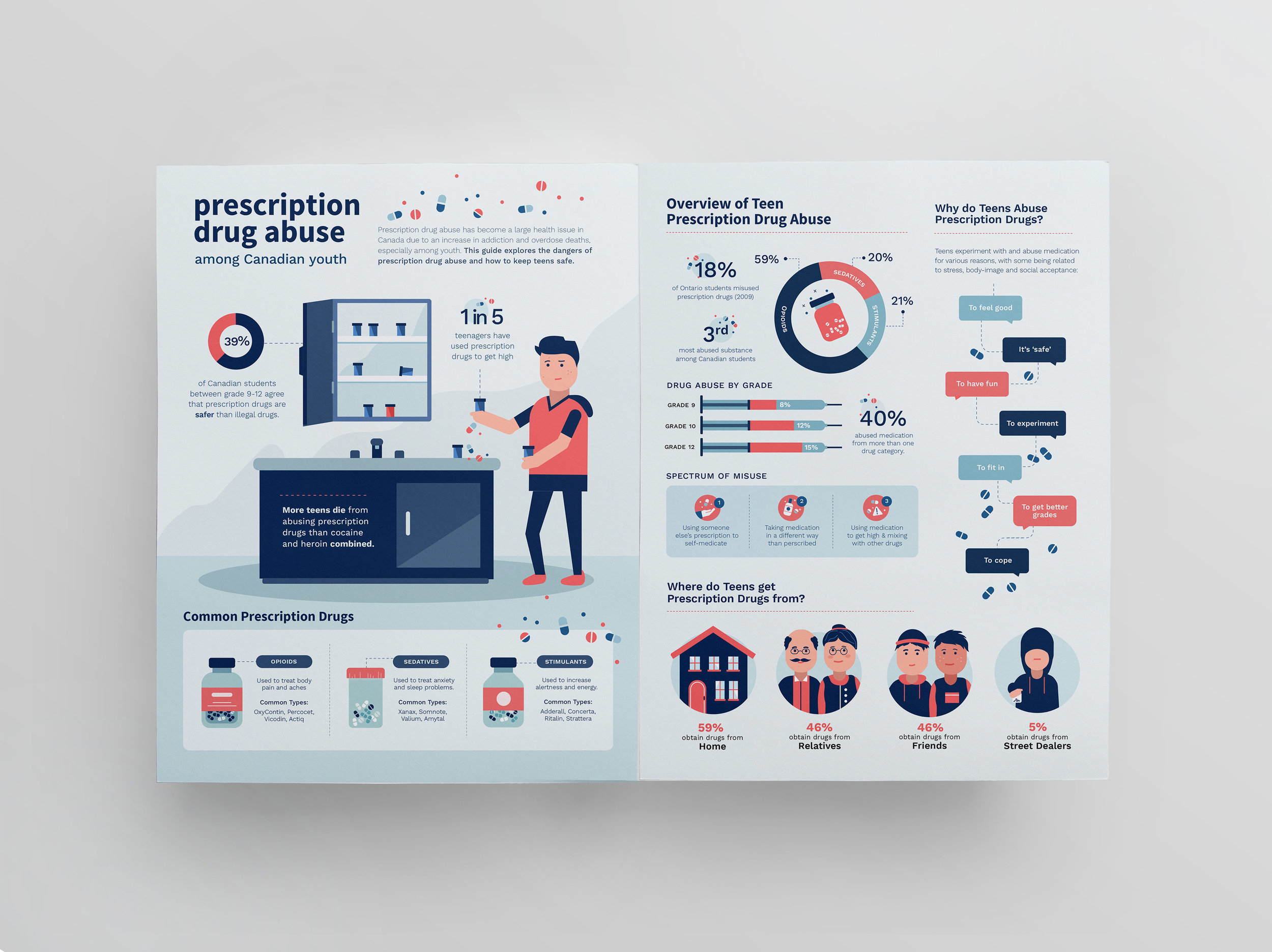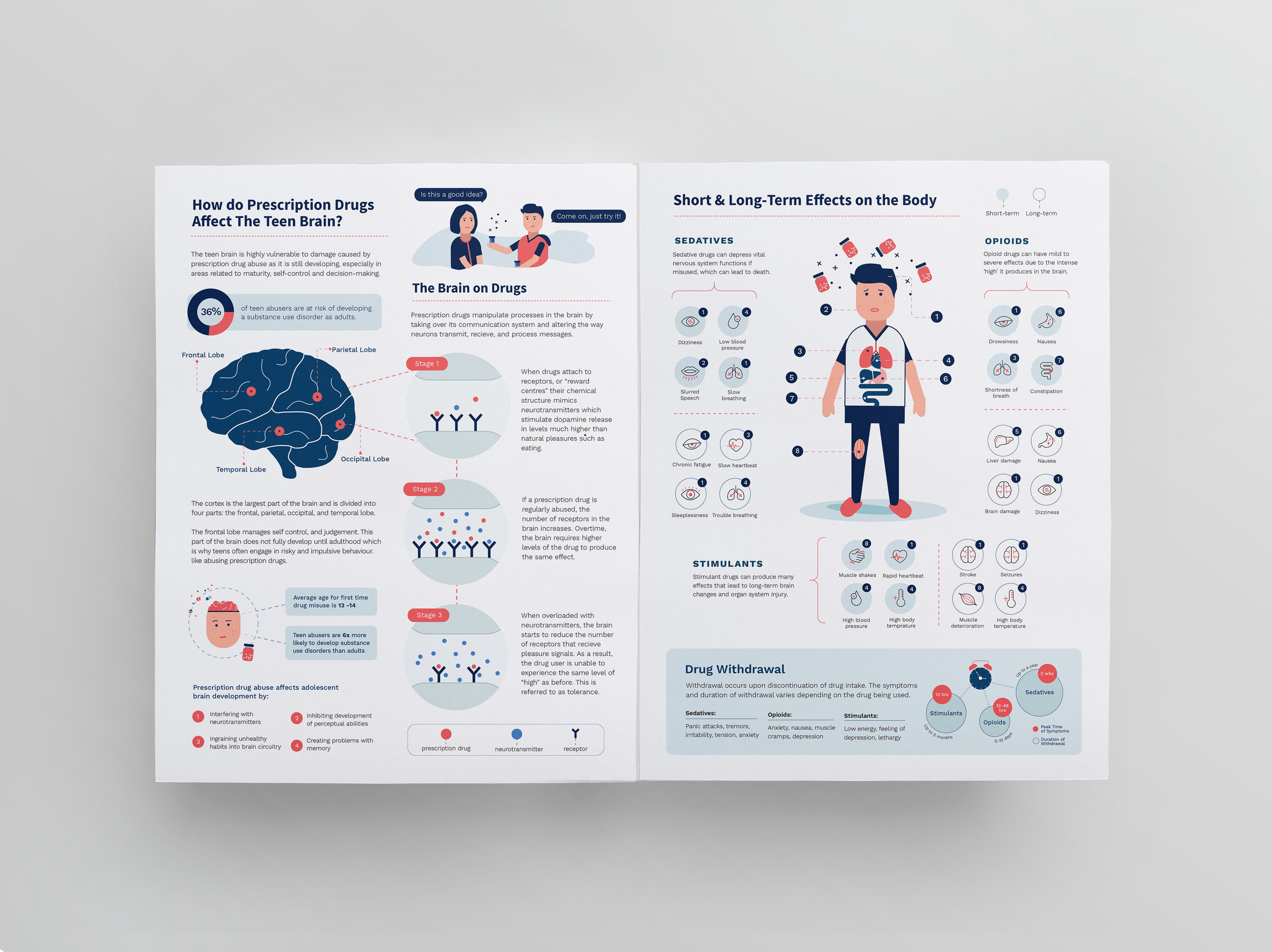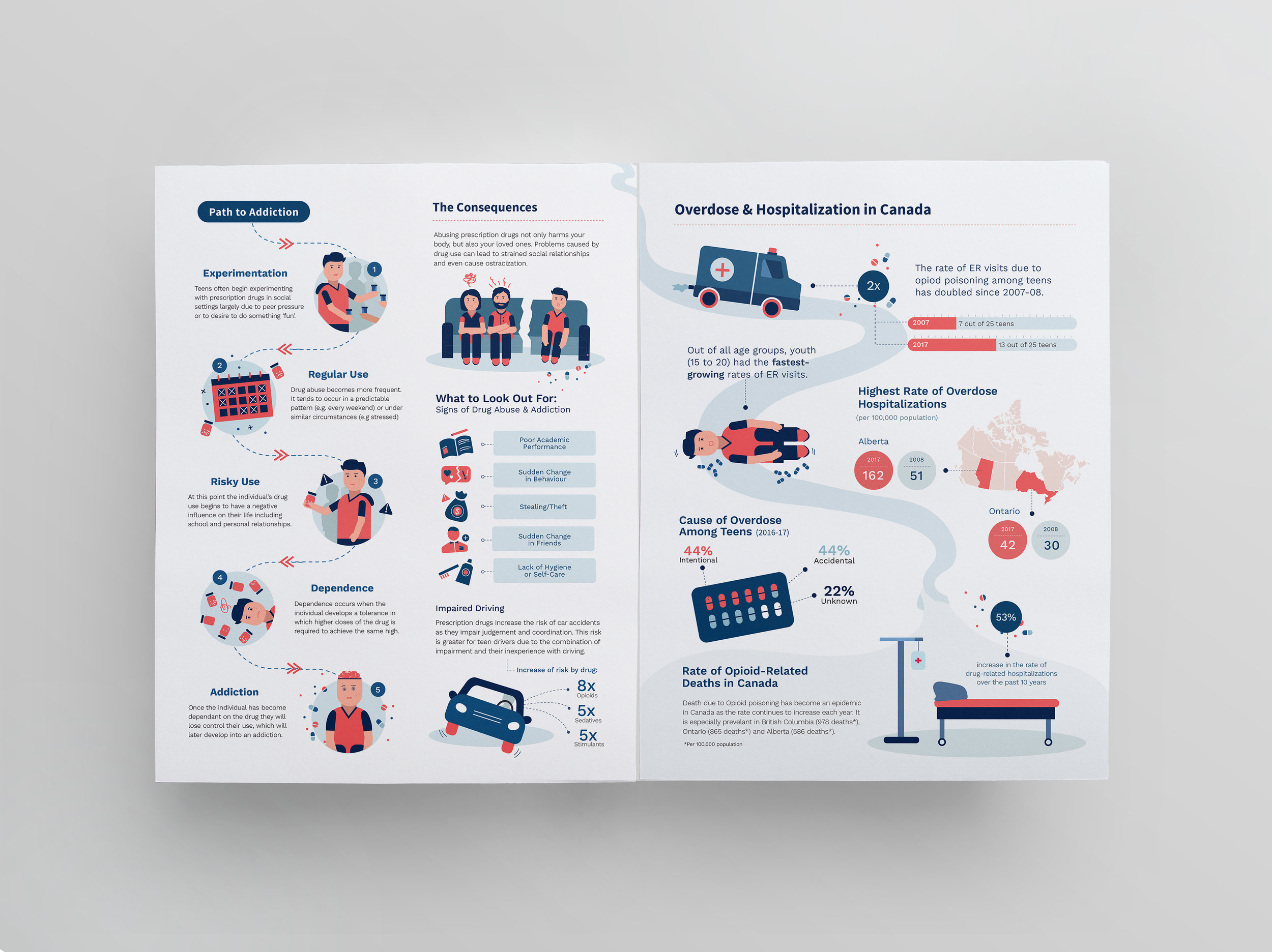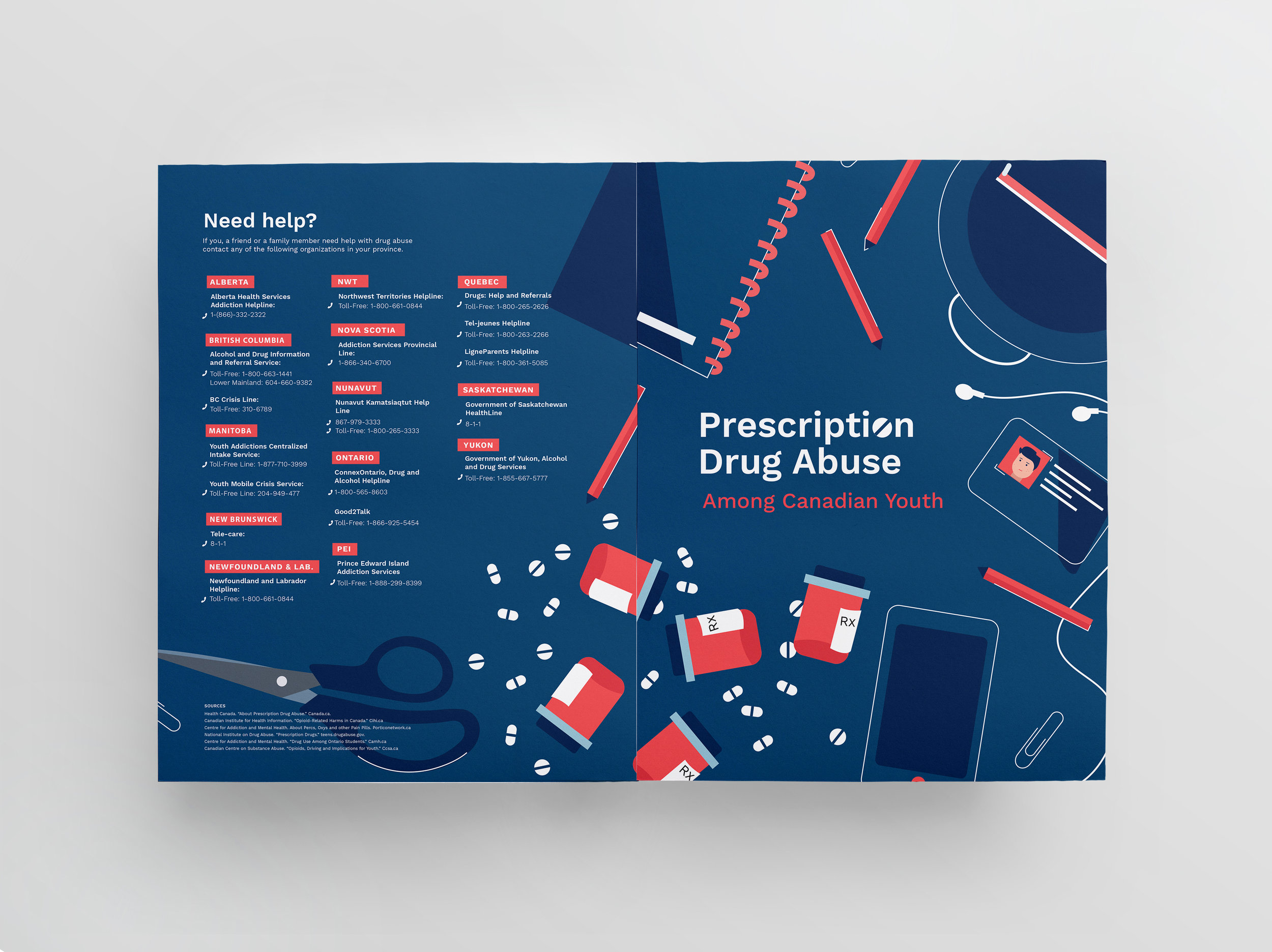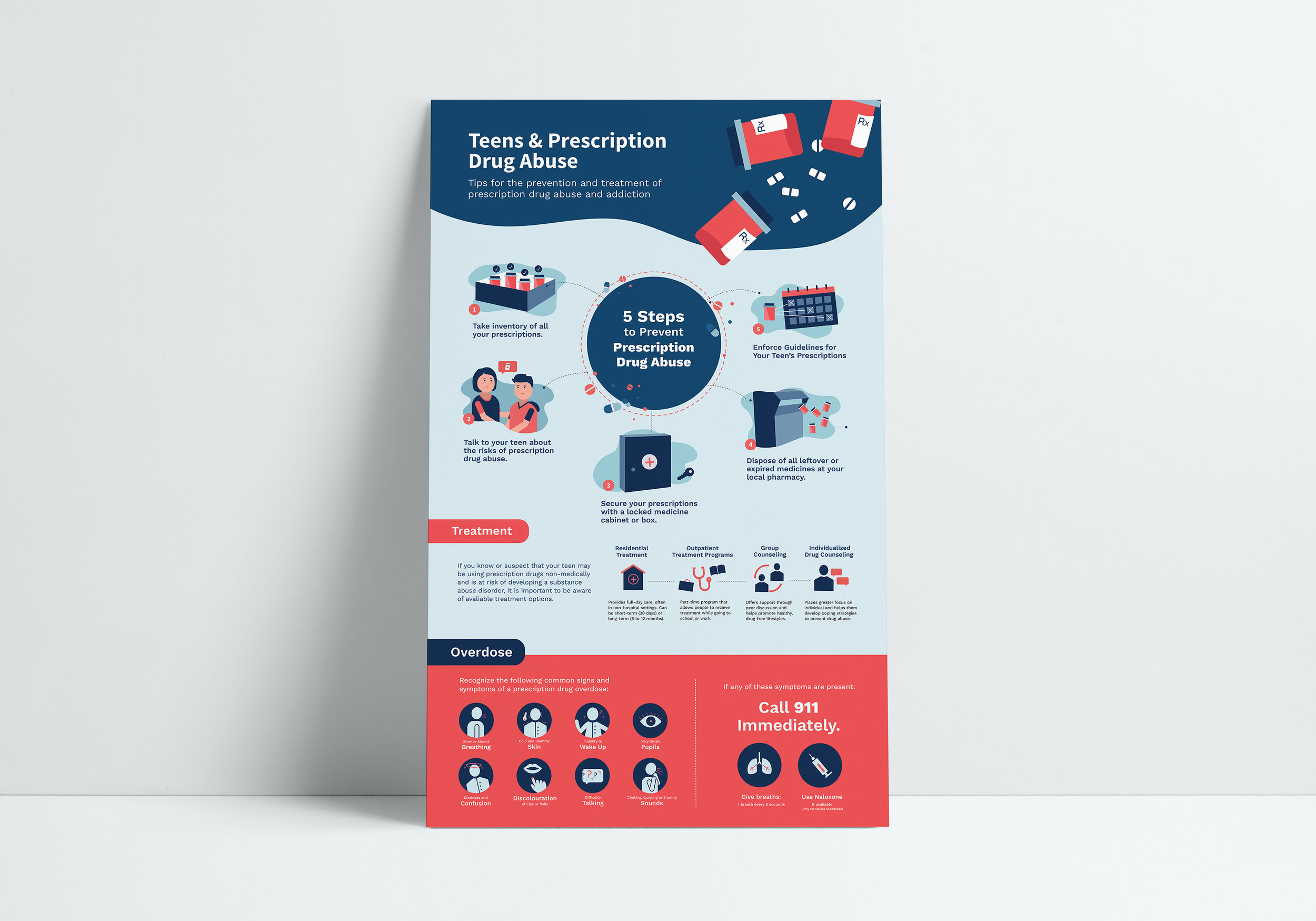
Who's Popping Pills?
Who’s Popping Pills?
A print & interactive pamphlet that highlights the dangers of teen prescription drug abuse while providing information on support, prevention and treatment.

Project Type
Information Design & Illustration, UX/UI
Timeframe
September 2017 -
January 2018
Tools
Illustrator, Photoshop & InVision
The Problem
Prescription drug abuse is a growing public concern in Canada, especially due to the rise of opioid-related overdoses and deaths in the past few years. According to a study published by the Canadian Institute for Health Information Alcohol in 2017, youth between 14 to 24 years of age had the highest and fastest-growing rates of hospitalization due to painkiller overdose. Unsurprisingly, youth are more likely than adults to engage in risky substance use and are also more susceptible to harm from misuse. With continued abuse, prescription drugs can become highly detrimental to their health, safety, education and relationships.
One of the biggest underlying issues is found to be the lack of education among youth about the detrimental effects of misusing prescription drugs. In many cases, teens assume that because they are prescribed by a doctor and technically 'legal' it is automatically safe to use for fun. It is imperative for today's teens to understand that abusing prescription drugs is just as dangerous as abusing ‘street’ drugs. Another issue is the lack of awareness among parents about why it is important to safeguard their medication and how it can be used for the wrong purposes simply because it is so accessible.
Design Challenge
How might we design an engaging and inviting campaign to help educate parents in Canada about the dangers of prescription drug abuse among youth?
Understanding the Audience
The first step in my design process was to research online to gain a better understanding of prescription drug abuse in Canada and its prevalence among youth. By gathering statistical information from a variety of sources such as news articles and scholarly journals, I was able to uncover key details about the issue such as the primary sources of prescription drugs, short and long term effects it has on the brain and addiction patterns. Once I understood the scope of the issue, I decided to gather anecdotal information by interviewing Canadian teenagers and parents of teenagers that have struggled with prescription drug abuse. Through this I was able to understand the effects of prescription drug abuse from a personal perspective and find out what motivated these individuals to begin abusing the drugs.
Upon talking to parents about prescription drug abuse I was also able to gain insight as to what aspects of prescription drug abuse families were the most concerned about and what information they lacked the most. Additionally, I spoke to other stakeholders such as guidance counsellors and family doctors to gain insight as to what tools or resources they have used to educate youth about prescription drug abuse. I was advised that educational resources using storytelling, animations and/or characters were often the most effective as they are engaging and friendly for both target audiences.
The Approach
After organizing the information I gathered from the online sources and the interviews, I began to create a story framework following the structure the 24 x 36 inch pamphlet. I intended for each fold in the pamphlet to focus on a different aspect of the issue such as the general overview, addiction process and social consequences, etc. After sketching out the storyboards I decided to test two different approaches; one approach utilized a highly detailed comic narrative style that focused on the qualitative narrative while the other followed a simpler illustrative style to convey primarily qualitative information within each section. I chose to experiment with both of these styles as I felt that they would help the statistical data come across as interesting and digestible.
I tested the effectiveness of both approaches by creating mock pamphlets of the storyboards and giving them to teenagers (13 to 19 years old) and parents (anyone above 25+ years of age). In this test I asked both target groups to discuss what they thought the key takeaway messages were from the pamphlets and I also asked them to rate the effectiveness of the way the information was presented. Overall the second approach had received the strongest positive responses with participants indicating that it was easy to understand as the information was simplified and supported with lots of illustrative content.
Visual Concept Development
To communicate the issue of teen prescription drug abuse in the form of a story, I decided to follow my second approach through the use of illustrative diagrams and smaller themed sections that would be revealed each time the reader unfolds the pamphlet. For continuity, I created one dominant character and repeated them in various scenarios within each section. Doing so would allow readers to feel as if they are following the life of the character as he goes through the cycle of prescription drug abuse and eventually faces the consequences of addiction. I began to develop the narrative according to the information architecture and the character design by first hand sketching some preliminary concepts. I then moved onto rough digital renders which were refined through multiple iterations until I created the final concept.
Final Pamphlet Concept
The final pamphlet features eight panels in total with two opening panels that provide a general overview of prescription drug abuse such as, national statistics of misuse and overdose, peer pressure, sources of drugs and the types of commonly misused drugs. Additionally, the four inside panels discuss the addiction process; short and long-term effects on the body; and the social consequences. The backside of the pamphlet also features a full-size poster that provides information on how to prevent prescription drug abuse, treatment methods and what to do in case of an overdose. This pamphlet follows a simple yet comical illustrative approach with a firm tone to ensure that it is both engaging and informative.

